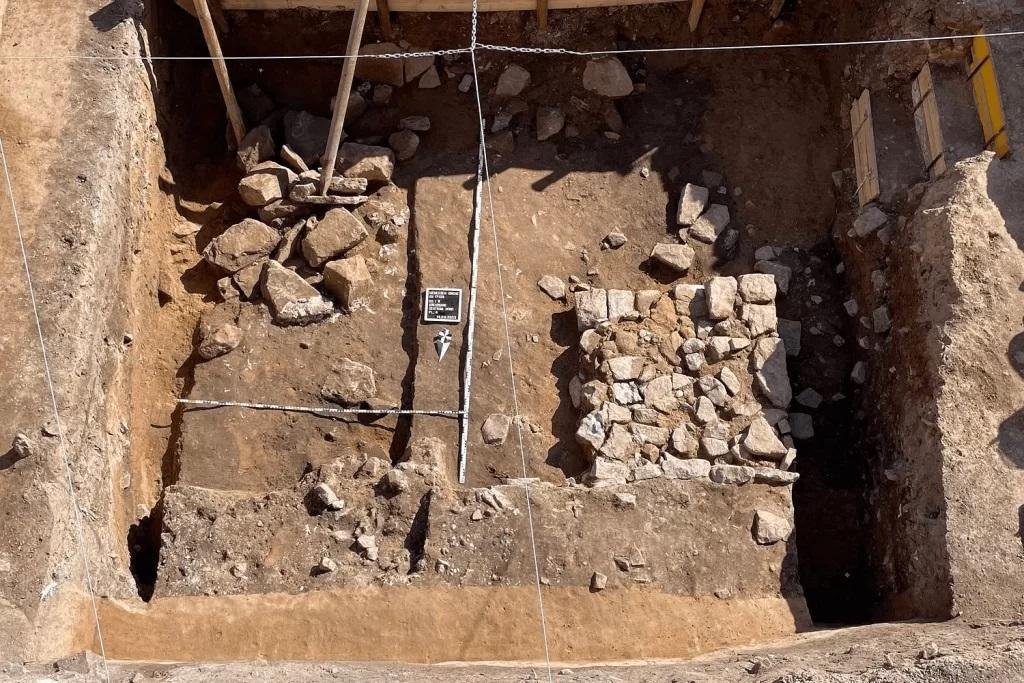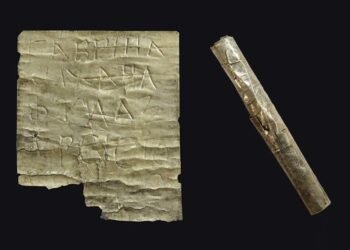Archaeologists have made a significant discovery, potentially pinpointing the long-lost site of Emperor Otto I the Great’s death and burial, a significant figure in the history of the Holy Roman Empire.
This remarkable revelation is the result of exhaustive excavations conducted in Memleben, a medieval settlement nestled within the town of Kaiserpfalz, renowned for housing the palaces of German kings.

Emperor Otto I, hailed as the Duke of Saxony, German King, and the inaugural Emperor of the Holy Roman Empire, has long been a subject of historical intrigue. Although history records that both Henry I the Fowler and his son Otto I met their end in Memleben, the precise location of the first Holy Roman Emperor’s burial site remained an enigma, until now.
For the past six years, archaeologists from the State Office for Monument Preservation and Archaeology Saxony-Anhalt have meticulously delved into this historical site, and this year, their relentless efforts have yielded findings of unparalleled significance.
The epicenter of these excavations was the former Benedictine monastery, which has stood as a monument to history since its establishment in 973 CE by Otto II, the son and successor of Otto I. This monastery served as a tribute to his father’s legacy, marking a significant chapter in the Holy Roman Empire’s narrative. For a brief but illustrious period, this site held sway as one of Germany’s most important monasteries.
The impact of this revelation cannot be overstated, considering the historical weight carried by Otto I. He is renowned as the Duke of Saxony, German King, and, most significantly, the founder of the Holy Roman Empire, marking a pivotal epoch in European history. He earned this esteemed title by defeating pagan Hungarian invaders in 955 CE., successfully defending Christendom.
To assert his divine right and consolidate his reign, Otto I formed alliances with influential bishops, thereby securing his authority and initiating a vigorous expansion into Italy. After his passing in 973 CE., he was succeeded by his son, Otto II, who oversaw the establishment of the Benedictine monastery in Memleben, commemorating his father’s legacy.
The architectural remains that have come to light during these excavations offer tantalizing clues about the history of this significant site. Specifically, the focus has been on three areas in close proximity to the monumental church constructed under the aegis of Otto II. These areas include the region surrounding the northeast side apse, a partially utilized cemetery, the cloister section adjoining the northern aisle, and the connecting point between the side aisle and the cloister in the western transept.
Notably, in 2022, researchers unearthed the foundations of a stone structure that predates the monumental church, shedding light on the era of Henry the Fowler and Otto the Great. This building, oriented east to west and measuring approximately 9.20 meters in width, showcased remarkable craftsmanship for its time. The building’s purpose remains a subject of speculation, with conjecture ranging from an older sacred edifice to a representative structure of the Palatinate of Memleben.

Perhaps the most tantalizing revelation is the potential connection between this structure and Otto the Great’s remains. A written source from the 16th century alludes to the possibility that this location was used for the reburial of Otto the Great’s heart. Thietmar von Merseburg’s chronicle, dating from the early 11th century, recounts that Otto the Great’s entrails were interred in Memleben’s St. Mary’s Church, a precursor to Otto II’s monumental church. His embalmed body was then transported to Magdeburg, suggesting that the recently discovered building may have served as a temporary sanctuary for the veneration of this sacred relic.
Further exploration of the densely populated cemetery adjacent to Otto II’s church has further enriched our understanding of this historical site. It offers poignant evidence of the site’s deep-rooted significance and its enduring role as a place of remembrance for the ruling family, even after it lost its autonomy in 1015.
To gain a comprehensive understanding of the building history and layout of Otto II’s church, archaeologists extended their investigations to the area outside the northern aisle. The eastern apse and transept emerged as the initial components built, followed by the simultaneous construction of the two eastern side apses and the nave, along with the western transept.

The discoveries also included compelling evidence of a systematic demolition of this monumental structure. Severe fire damage on the foundation suggested a deliberate strategy of dismantling the building through fire-induced structural collapse, in lieu of the laborious removal of individual stones. These findings can be dated to the 14th century.
The archaeologists’ tireless efforts in Memleben have unveiled an essential chapter in the history of the Holy Roman Empire and the first German Empire. The discovery of the stone predecessor building and its association with Otto the Great, all collectively form an unprecedented breakthrough in our understanding of this pivotal period in European history.
These excavations, conducted by the State Office for Monument Preservation and Archaeology Saxony-Anhalt, have been further enriched by the cooperation of the Martin Luther University of Halle-Wittenberg and the Anhalt University of Applied Sciences.


































